As nonprofit leaders continue to adjust to post-pandemic realities, as well as shifting economic and political landscapes, we asked our Nonprofit Practice Partners to share how the current climate is impacting leadership selection and development.
Below, DHR’s Partners highlight the strategies they are utilizing to support clients seeking to secure leadership to elevate operational efficiencies, adapt to new technologies, manage remote and hybrid teams, and ensure the development and tenure of high-potential executives and emerging leaders.
Diverse Talent Driving Revenue – Renato T. Amador
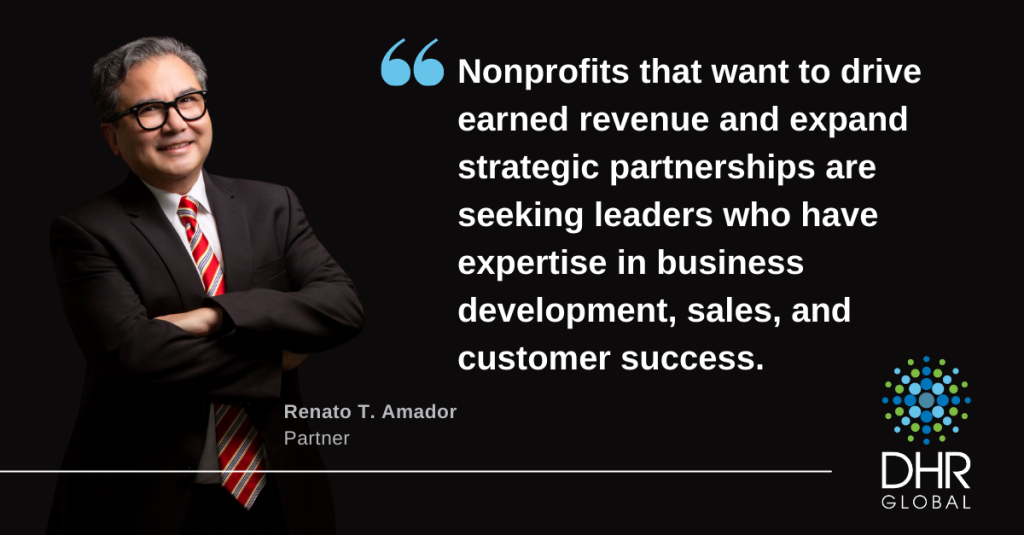
The social impact sector is witnessing a convergence of themes that straddle the nonprofit and for-profit worlds. Mission-driven conservation, cultural, educational, healthcare, and social justice institutions are increasingly capitalizing on data, analytics, and technology to build capacity and transform fundraising.
Nonprofits that want to drive earned revenue and expand strategic partnerships are seeking leaders who have expertise in business development, sales, and customer success. But nonprofits often face “translation issues” in identifying, assessing, and onboarding candidates who have hybrid backgrounds. Our recruitment success depends on being able to view candidate experience holistically and appreciate the transferability of skills, while identifying leadership traits that have a potential for real impact in a nonprofit context.
Private Sector Transitions Accelerating Change – Diane Charness
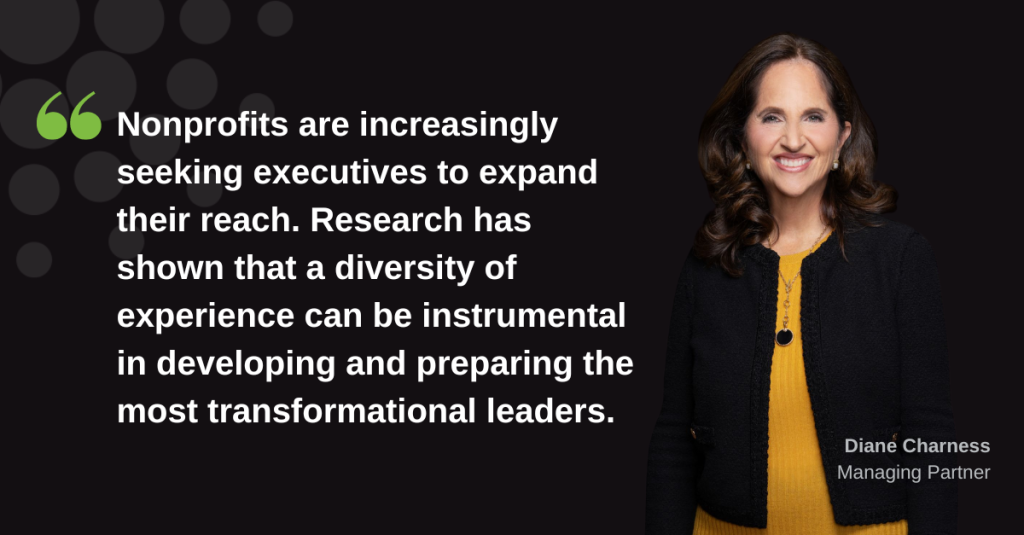
Nonprofits are increasingly seeking executives to expand their reach. Research has shown that a diversity of experience can be instrumental in developing and preparing the most transformational leaders, and those from private industry may possess the needed skills and attributes to increase effectiveness and impact. At a time when nonprofits are seeking new ideas and approaches to deliver services, educate, heal, and expand their constituents’ horizons, we’re advocates of expanding candidate slates to include both seasoned nonprofit leaders, as well as those from outside the sector.
Leadership assessment tools enhance understanding of how likely a nontraditional candidate will perform in a nonprofit role. Will his or her pace, decision-making style, and level of independence be advantageous in a shared governance environment, or will it be disruptive? When a board seeks a turnaround or quick acceleration, it’s important to consider leaders who will accelerate change.
Succession Planning Key as CEOs Retire – Michele Counter
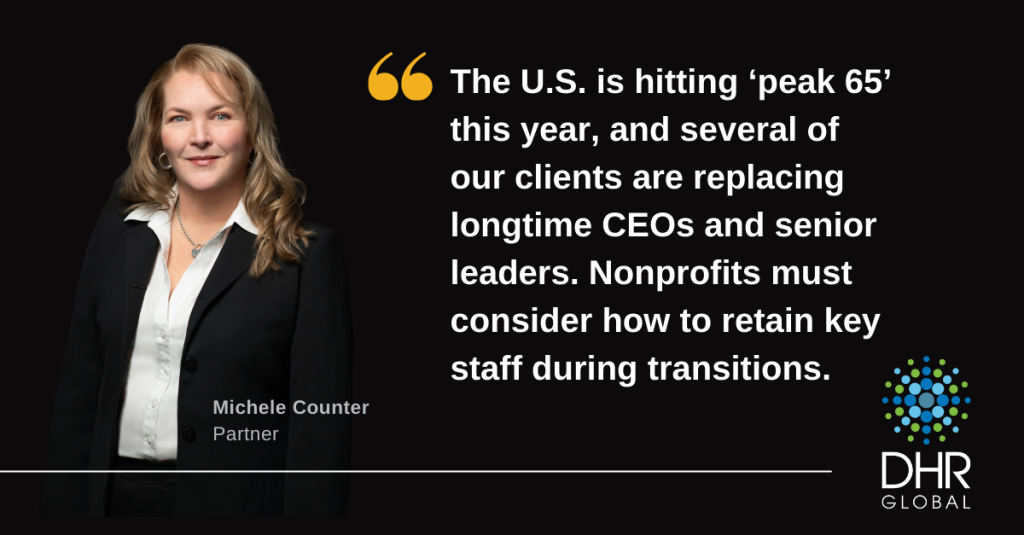
The U.S. is hitting “peak 65” this year, and several of our clients are replacing longtime CEOs and senior leaders who are retiring. Fortunately, many nonprofits saw this coming and began succession planning years ago. But succession planning involves more than assessing internal talent and developing future leaders. Nonprofits must also consider how to retain key staff during transitions as well as when and how to launch an executive search.
We help our clients assess internal talent gaps, create strategic retention agreements, and plan ideal timelines for an inclusive, forward-thinking executive search. We also help boards navigate something few anticipate: market-rate CEO compensation, which can be significantly higher than they’ve been paying a long-tenured leader.
Internal Candidates Emerge as Leadership Successors – Philip DeBoer
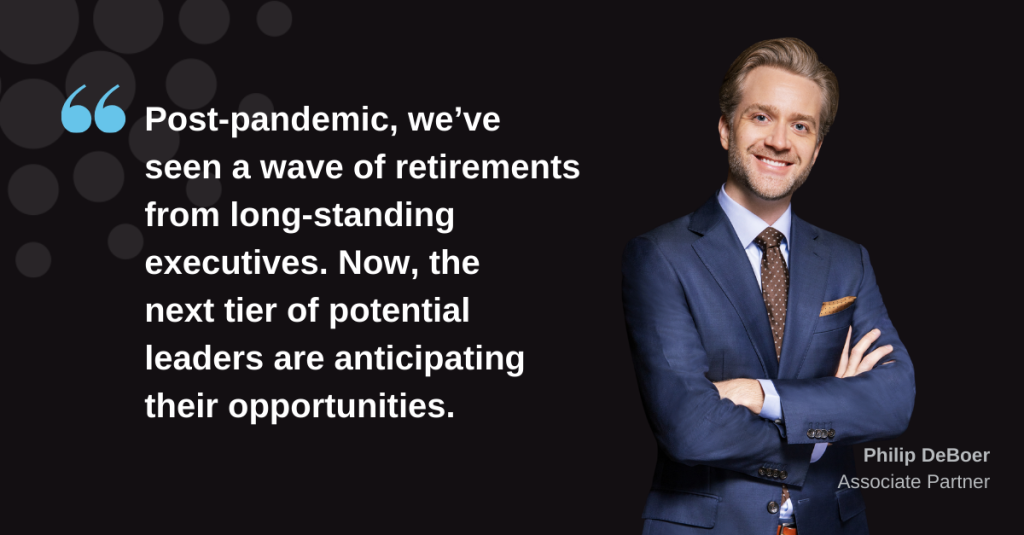
Post-pandemic, we’ve seen a wave of retirements from long-standing executives. Now, the next tier of potential leaders are anticipating their opportunities. As a result, we’re seeing a significant uptick in applications from internal candidates, which often poses delicate implications for both the employee and employer.
Over the past year, we have focused on tactfully helping our clients manage internal candidate expectations, ensuring fair evaluation processes for all applicants, and retaining key staff members who demonstrate value.
Corporate-Nonprofit Partnerships Supporting Goals – Amara Kea
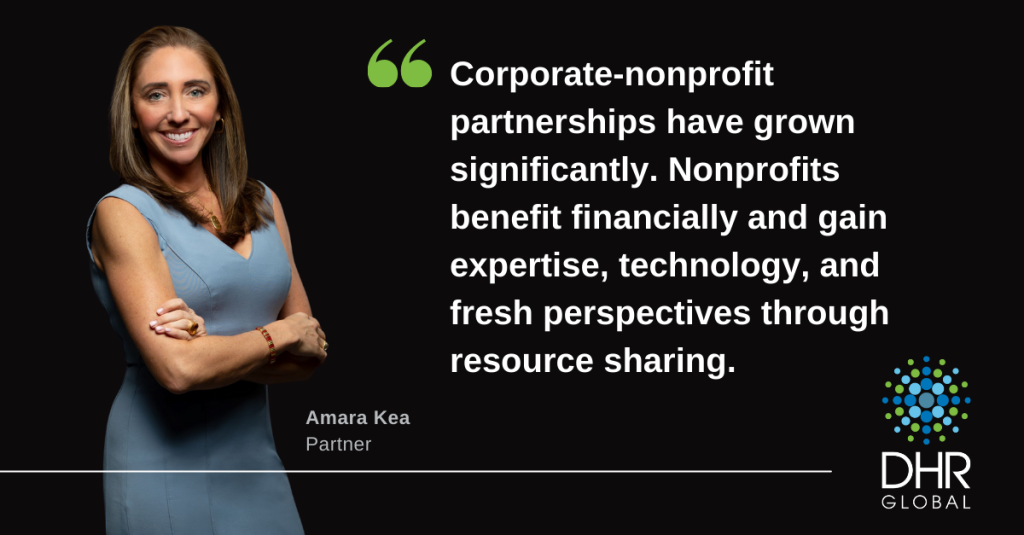
In recent years, corporate-nonprofit partnerships have grown significantly. These collaborations involve mutually beneficial relationships between nonprofit organizations and for-profit companies. Collaborating with a reputable nonprofit enhances a company’s image. Furthermore, it enhances positive brand association with consumers. In turn, nonprofits benefit financially and gain expertise, technology, and fresh perspectives through resource sharing with companies.
As this trend persists, we are helping clients plan for these alliances and build teams to support their related goals.
CEOs in High Demand with Focus on Diversity – Cyd Kinney, Dan Carney
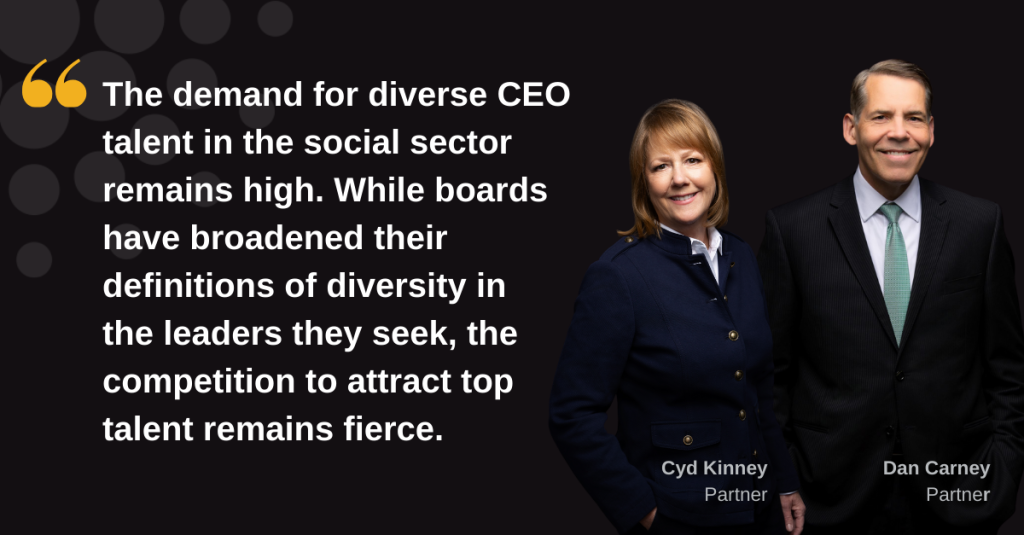
The demand for diverse CEO talent in the social sector remains high, especially following retirements and other post-pandemic influences. While boards have broadened their definitions of diversity in the leaders they seek, the competition to attract top talent remains fierce.
In our leadership searches, we are hands on so that we understand exactly how to align client and candidate needs. We work with boards to help them understand how to support their placed executive through year one – whether helping candidates faced with a move or supporting board leadership with early onboarding strategies.
Compensation Expectations Remain High – Sara Garlick Lundberg
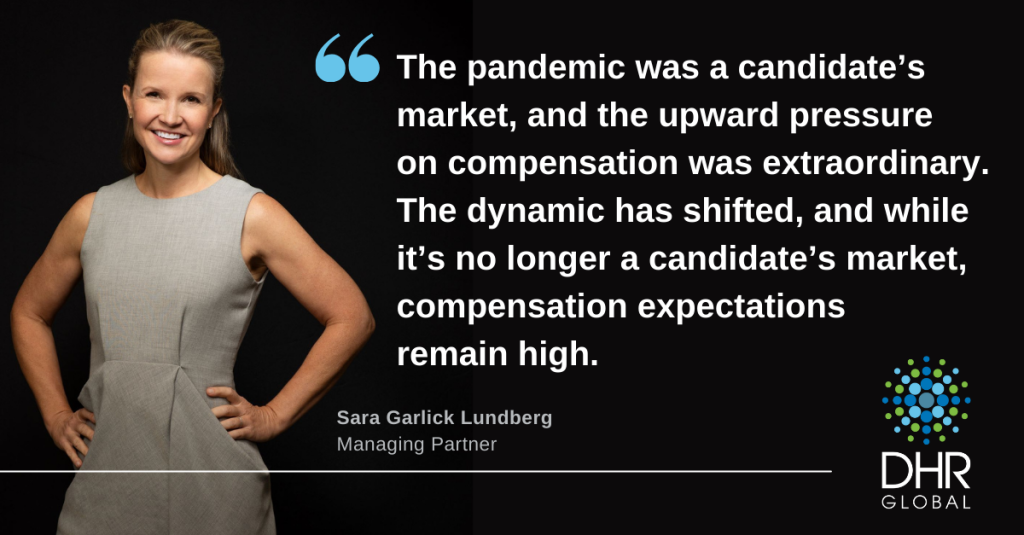
The pandemic was a candidate’s market, and the upward pressure on compensation was extraordinary. We saw candidates asking for as much as 30-40% more than what the market would typically recognize. The dynamic has shifted, and while it’s no longer a candidate’s market, compensation expectations remain high. Concerns regarding the cost of living will likely prolong this trend.
It’s critical to set compensation expectations with both candidates and client organizations early in the process. We ensure candidates understand that we build competitive candidate pools and set expectations appropriately. To guide clients on compensation, we research the market and identify their comfort zone as well as trade-offs for various skills and backgrounds. Once expectations are set, we devise and deliver creative strategies to attract top candidates.
Canadian Government & Funding Landscapes Evolve – Shahauna Siddiqui
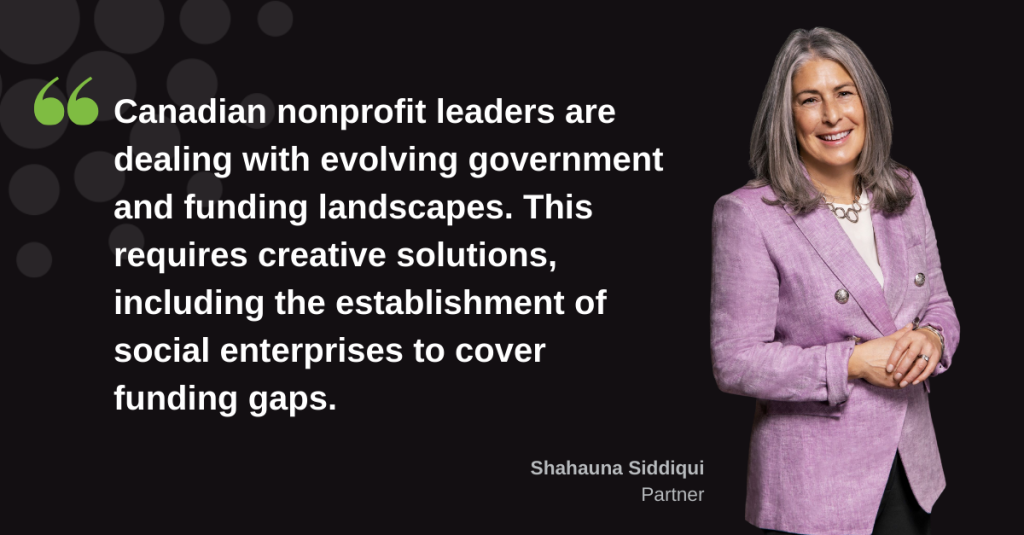
Canadian nonprofit leaders are dealing with evolving government and funding landscapes. These challenges require innovative and creative solutions, including the establishment of social enterprises to cover funding gaps.
As a result, nonprofits require leaders who have diverse experience and expertise, including a strong emphasis on advocacy. We’re helping clients sharpen their focus on broad leadership expertise. DHR’s network helps us to attract industry leaders to support and launch social enterprises. Our team is particularly successful in attracting leaders from the technology and retail sectors.
Empowering Nonprofit Growth
To navigate the array of challenges facing nonprofits in 2024, organizations need transformational leaders who will pave a path towards growth. Our Nonprofit Partners work collaboratively to meet these challenges by connecting proven leaders with organizations to advance their missions.
Learn more about DHR’s Nonprofit Practice Partners as well as our strategic talent advisory solutions for mission-driven organizations.
